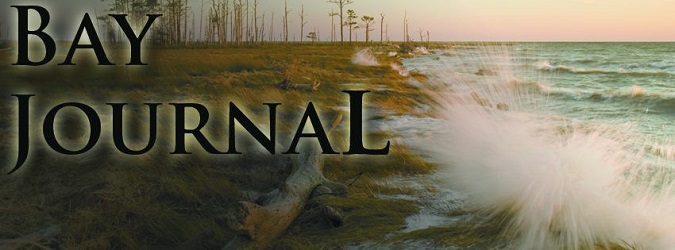 Summer nights in my backyard include the usual wildlife visitors: crickets, toads, bats and the occasional deer. But one particularly steamy August night I was rewarded with a glimpse of a new nocturnal guest. While letting out my dog, I was startled by a small animal hanging on my bird feeder. Its large eyes reflected the glare of the porch light as the small mammal stood motionless. Then, in an instant, it leaped, gliding silently off my deck to the woods below.
Summer nights in my backyard include the usual wildlife visitors: crickets, toads, bats and the occasional deer. But one particularly steamy August night I was rewarded with a glimpse of a new nocturnal guest. While letting out my dog, I was startled by a small animal hanging on my bird feeder. Its large eyes reflected the glare of the porch light as the small mammal stood motionless. Then, in an instant, it leaped, gliding silently off my deck to the woods below.
This nighttime raider was a southern flying squirrel (Glaucomys volans). Although found in forests from southern Ontario to the Gulf Coast, southern flying squirrels are not often seen due to their stealthy nighttime habits. Only 8–10 inches long (including the tail), southern flying squirrels are grayish to brown above and creamy white below with a flattened tail, large ears and big black eyes.
Their most notable feature is a thin furry membrane of skin, known as a patagium, which runs along the sides of the body from the wrist of the front leg to the ankle of the hind leg. This membrane is what gives the squirrel its flying or, more accurately, gliding ability.
When the front and back legs are extended, the membrane forms a winglike gliding surface, acting like a parachute while the flat tail serves as a rudder. This allows the squirrel to silently glide from tree to tree. Before landing, the squirrel drops its tail and lifts its front legs. This slackens the membrane and acts as a brake. Flying squirrels land as lightly and quietly as they glide and will immediately scurry to the other side of a tree trunk to avoid detection by predators.
There are two breeding periods for the southern flying squirrel. The first is February through March and the second, May through July. Litters average between three and four young, which are born hairless with eyes and ears closed, and weigh less than 0.25 of an ounce. Development is slow. Ears open at 3 weeks; eyes open a week later. The young are weaned by the time they are 6– to 8 weeks old and are then capable of gliding. Devoted mothers, the females seldom leave their newborns, defending them and even moving them if the nest is disturbed.
Southern flying squirrels favor beech-maple, oak-hickory and live oak forests. Tree cavities serve as nest sites. Often, a squirrel will use one cavity as its nesting site and others as feeding or refuge areas. Not surprisingly, their primary foods include nuts such as acorns and hickory nuts, but they will also eat berries, seeds, fruits, buds, flowers, mushrooms and bark.
As the days shorten, flying squirrels begin hoarding food. Nuts are gathered and stored, either buried individually or stashed in nest cavities or the cracks and crevices of trees. They do not hibernate but may remain in nests for several days during severe weather. Groups of flying squirrels may gather in one cavity to conserve warmth.
Predators include cats, owls, hawks, raccoons, weasels and foxes. But the amount and quality of habitat is probably the biggest threat these squirrels face. Southern flying squirrels require forests with mast (nut)-producing trees as well as snags (dead trees) or large trees with cavities for nesting.
The Chesapeake Bay watershed was covered by forests when colonists first arrived. By the late 1800s, 40–50 percent of the watershed’s forests had been cleared of trees. Throughout the 20th century, new forests grew up on abandoned farmland. But these forests are now more homogenous in age, size and species composition.
Between 1982 and 1997, the Bay watershed lost more than 750,000 acres of forestland to development — a rate of about 100 acres per day. While this rate fell in 2006 to an estimated
70 acres per day, it remains unsustainable and forests have been divided into disconnected fragments, which offer less high-quality habitat for forest wildlife.
I have yet to see another flying squirrel in the forest near my home. But efforts to conserve remaining forests and reconnect patches of forests are in full force throughout the watershed. I’ll continue to keep my eyes peeled for this night glider and hope to see one again soon.
Kathy Reshetiloff is with the U.S. Fish and Wildlife Service’s Chesapeake Bay Field Office in Annapolis.

